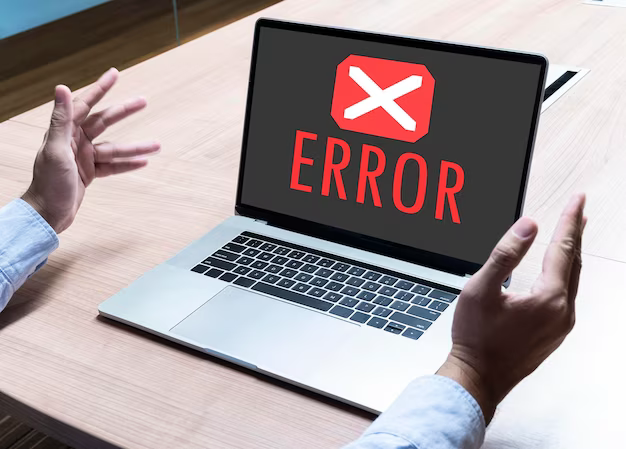Error 407 is an HTTP response status code typically seen when an Internet user tries to access a web page. The server running the website acknowledges the correctness of the data stream sent by the client – e.g., a web browser or an automated web robot like CheckUpDown. However, the server identifies a need for authentication via a proxy server before granting access to the requested URL resource, an action which hasn’t been done.
In simpler terms, the server is calling for the user to log in to the proxy server first by providing valid user ID and password credentials. A proxy server acts as an intermediary between the client and the server and plays a significant part in maintaining security while browsing the Internet.
Error 407 is not a persistent issue, but it can be bothersome to users who encounter this hurdle unexpectedly while trying to access a web page. Knowing how to handle it is crucial in ensuring a smooth online browsing experience.
Resolving Error 407: Effective Solutions
When a 407 error is detected via a web browser, it can often be resolved by tweaking the way a user navigates to the URL, such as by accessing another URL for the proxy server first.
Let’s explore some potential solutions in more detail:
- Contact your Internet Service Provider (ISP): Your ISP plays a crucial role in your Internet security setup. They should be able to provide guidance on how to use the proxy server effectively and how to deal with the 407 error;
- Double-check your login credentials: If you are already aware of the proxy server setup, ensure that you’re inputting the correct user ID and password;
- Different navigation method: Try accessing the website via a different route. Sometimes, logging into the proxy server first before moving onto your intended website can help solve this issue.
Breaking Down Error 407
HTTP Error 407 is a common issue that Internet users encounter from time to time. To comprehend this error, we need to understand its essence. Error 407 arises when the website server acknowledges the validity of the data stream sent by the client – be it an everyday web browser or an automated robot like CheckUpDown – but identifies a requirement for authentication via a proxy server before the access to the requested URL resource is granted. This authentication hasn’t been fulfilled, thus leading to Error 407.
In simpler language, this error is the server’s way of requesting the user to log in to the proxy server before granting access to the website. By requiring a valid user ID and password, the proxy server acts as a gatekeeper, ensuring secure internet browsing.
While Error 407 is not a server-side issue and is often temporary, it can be disruptive to a user’s browsing experience. Therefore, understanding its origin and knowing how to resolve it is vital.
Mitigating Error 407: A Step-by-Step Approach
When faced with a 407 error, various strategies can be employed to bypass this roadblock. Drawing a parallel with the 401 – Unauthorized error, the primary difference lies in the involvement of an extra proxy server in case of the 407 error. The following steps can help you navigate around this error:
- Reach Out to Your ISP: Consult your Internet Service Provider (ISP) for assistance. Given their crucial role in your Internet security setup, they will be able to guide you on efficient proxy server usage and on resolving the 407 error;
- Verify Your Login Details: If you’re already acquainted with the proxy server’s role and operation, ensure that you’re entering the correct user ID and password. An incorrect login could trigger the 407 error;
- Alter Your Navigation Method: Attempt to access the website through a different route. Accessing another URL for the proxy server before attempting the actual website could prove successful in mitigating the error.

Decoding the 407 Error: HTTP Communication Explained
The journey of a client, like your web browser or an automated web robot, in interacting with a web server can be viewed as a cycle involving several stages. Understanding these stages helps shed light on where and why a 407 error occurs.
Here’s how the cycle unfolds:
- IP Address Acquisition: The client starts by obtaining an IP address from the IP name of the website (which is essentially the website URL without the ‘http://’). Domain Name Servers (DNSs) facilitate this lookup or conversion from an IP name to an IP address;
- IP Socket Connection: With the IP address in hand, the client opens an IP socket connection to that specific address;
- HTTP Data Stream Initiation: The client then sends an HTTP data stream through that socket to communicate with the web server;
- HTTP Data Stream Reception: The client subsequently receives an HTTP data stream back from the web server. This data stream contains status codes, defined by the HTTP protocol. The client parses this data stream to understand the status codes and extract other useful information.
The 407 error comes into play during the last step, when the client receives an HTTP status code that it identifies as ‘407’.
Understanding the 408 Error: A Glimpse into Delayed Requests
In the realm of HTTP status codes, the 408 error emerges as a counterpart to the enigmatic 407 error. It materializes when a client sends a request to a web server, but the server fails to respond within a reasonable time frame. Essentially, it signifies that the client’s request has encountered a delay in processing.
This delay could be due to various factors, such as network congestion, server overload, or connectivity issues. The 408 error serves as a signal for the client to either resend the request or reconfigure its approach to circumvent the delay.
Much like the 407 error, understanding the origins and implications of the 408 error is pivotal for a seamless digital journey. With insights into both these status codes, you are better equipped to navigate the intricacies of web communication and ensure an uninterrupted browsing experience.
Final Reflections
Internet browsing has become an integral part of our life, but it’s not always a bed of roses. Occasional hurdles like the 407 error can disrupt your smooth journey across the digital landscape. Armed with an understanding of the HTTP communication cycle and what a 407 error implies, you can better navigate these challenges. Remember, the key to resolving a 407 error lies in fulfilling the proxy server’s authentication requirements. With this knowledge at your fingertips, you are better equipped to enjoy a seamless and uninterrupted browsing experience.



